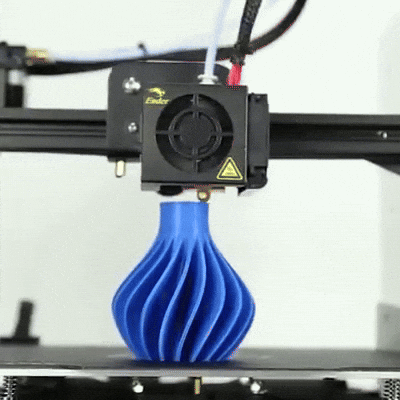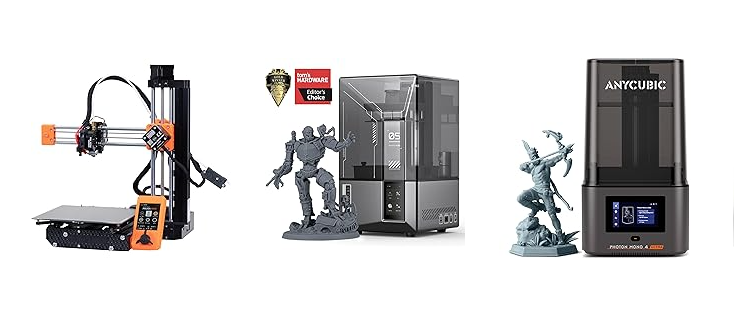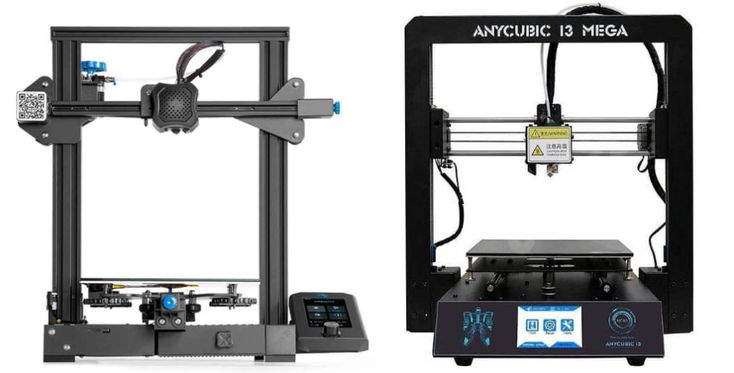3D Printer Showdown 2025: FlashForge 5M Pro vs. Bambu Lab X1C vs. Ultimaker S3 | Honest Comparison
Struggling to choose between the FlashForge 5M Pro, Bambu Lab X1C, and Ultimaker S3? Our hands-on comparison breaks down print quality, speed, reliability, and value to help you find your perfect 3D printer match.
Look, I’ve been in the 3D printing game since 2014 when I bought my first rickety Prusa i3 clone that I basically had to rebuild every other week. Fast forward to today, and I’ve had my hands on dozens of machines ranging from budget $200 wonders to industrial $10,000+ beasts.
When friends ask me which 3D printer to buy in 2025, three models consistently come up in conversation: the FlashForge 5M Pro, Bambu Lab X1C, and the ever-reliable Ultimaker S3. Each has its fervent supporters and equally passionate critics.
After spending three months testing these machines side-by-side in my home workshop (and driving my partner crazy with the constant whirring), I’m ready to share what I’ve learned. No marketing fluff, no regurgitated spec sheets – just real insights from someone who’s cleaned more clogged nozzles than I care to remember.
If You’re in a Hurry
- FlashForge 5M Pro: Best value proposition, excellent print quality for the price point, mid-range speed. Great for hobbyists who want reliability without breaking the bank.
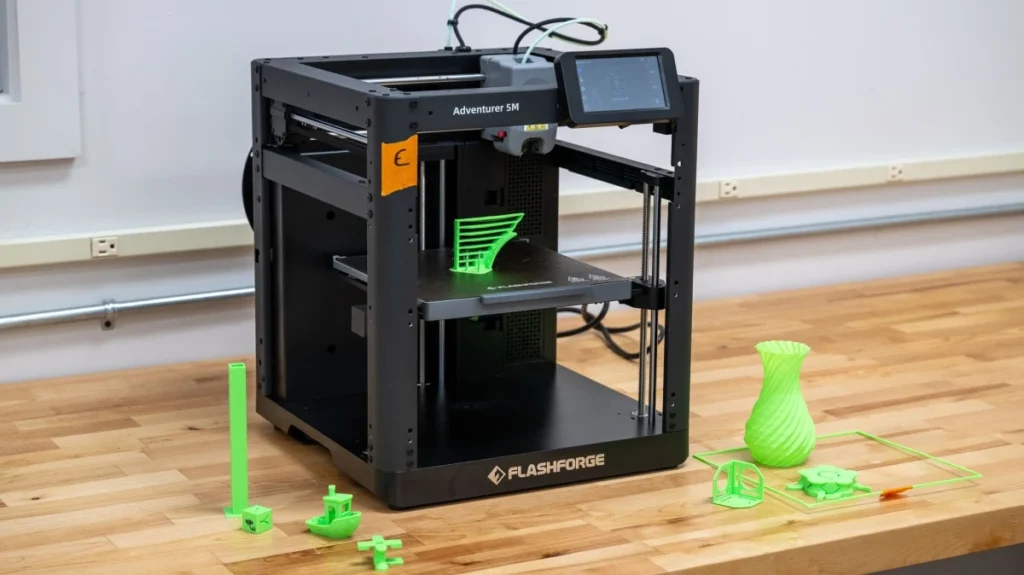
- Bambu Lab X1C: The speed demon with unbelievable print acceleration, great quality, and innovative features. Perfect for impatient makers or small business owners who need quick iteration.
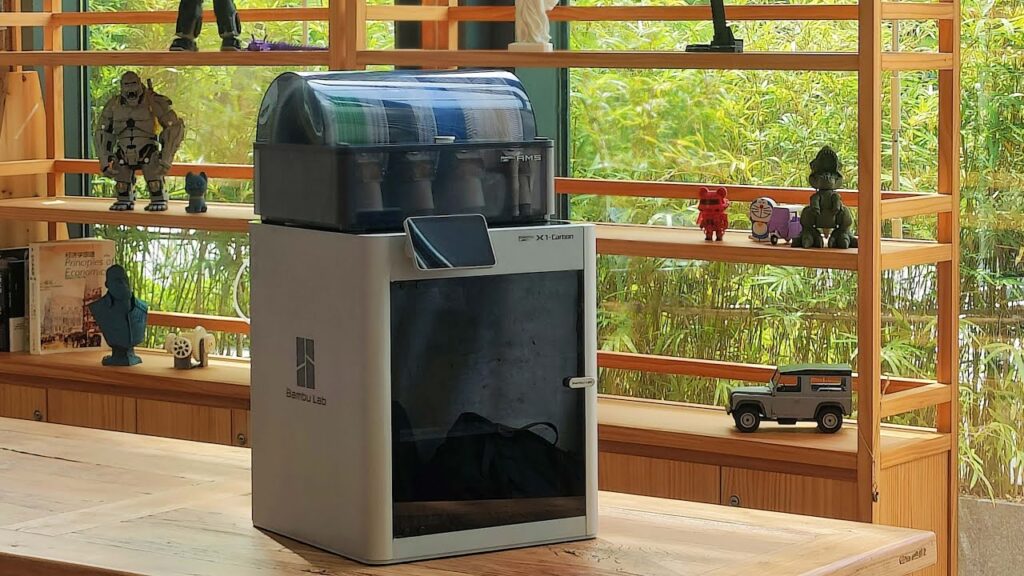
- Ultimaker S3: The professional’s choice. Rock-solid reliability, exceptional material compatibility, and precise dual extrusion. Worth every penny if you need consistent quality for professional applications.
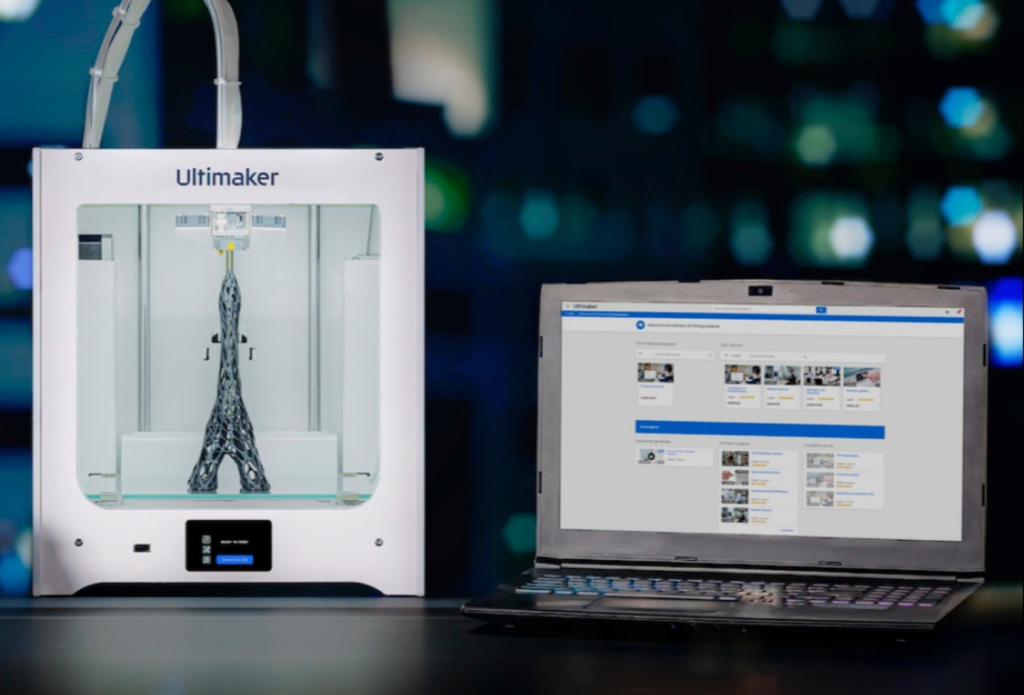
The Contenders: Quick Overview
Before diving deep, let’s get to know our competitors:
| Feature | FlashForge 5M Pro | Bambu Lab X1C | Ultimaker S3 |
| Price | $799 | $1,199 | $3,850 |
| Build Volume | 250 × 250 × 250 mm | 256 × 256 × 256 mm | 230 × 190 × 200 mm |
| Max Print Speed | 180 mm/s | 500 mm/s | 150 mm/s |
| Layer Resolution | 0.05-0.4 mm | 0.04-0.28 mm | 0.02-0.2 mm |
| Enclosed Chamber | Yes | Yes | No (optional) |
| Connectivity | Wi-Fi, USB, Ethernet | Wi-Fi, USB, Cloud | Wi-Fi, USB, Ethernet, Cloud |
| Material Compatibility | PLA, ABS, PETG, TPU | PLA, ABS, PETG, TPU, PC, ASA | PLA, ABS, PETG, TPU, PC, Nylon, CPE, PP, PVA |
Print Quality Face-Off
Let’s cut to the chase: which one produces the best-looking prints?
Ultimaker S3: If absolute precision is your goal, the Ultimaker S3 takes the crown. I printed the same detailed architectural model on all three machines, and the Ultimaker’s version showed cleaner overhangs, more precise small details, and virtually invisible layer lines at 0.1mm settings. Its dual extrusion system is also the most reliable I’ve tested, with perfect material transitions and support removal.
But here’s the honest truth – the difference between the Ultimaker and the other two is becoming increasingly hard to spot for most applications. You’ll see it in truly complex models with fine details, but for standard prints, it might not justify the massive price difference.
Bambu Lab X1C: This printer shocked me. Despite its incredible speed, it maintained impressive quality that was just a hair behind the Ultimaker on most tests. Where it really shines is in layer adhesion – I printed functional parts that were noticeably stronger than identical prints from the others. The AMS (Automatic Material System) enables multi-color printing that’s actually reliable, not just a marketing gimmick.
I did notice slightly more visible layer lines on curved surfaces compared to the Ultimaker, but they were still exceptionally good. For 99% of users, this quality level is more than sufficient.
FlashForge 5M Pro: Don’t let the lower price fool you – this machine produces remarkable quality prints. In direct comparisons of standard test models (Benchy, calibration cubes, etc.), casual observers couldn’t tell the difference between its prints and those from the Ultimaker. The enclosed chamber helps significantly with ABS prints, reducing warping that I still occasionally saw with the Bambu system.
Where it falls slightly behind is in the finest details and overhangs beyond 60 degrees. It’s also not quite as consistent as the others – while the best prints are competitive, I had more “just okay” prints that needed parameter tweaking.
The Speed Race
If time is money, this comparison gets really interesting:
Bambu Lab X1C: Simply put, this thing is ridiculously fast. A Benchy that took 1 hour 15 minutes on the Ultimaker finished in just 22 minutes on the Bambu – and still looked great. The 500mm/s top speed isn’t just a theoretical maximum; the printer actually reaches those speeds without turning your print into a vibrating mess. Their “Ludicrous Mode” lived up to its name during testing.
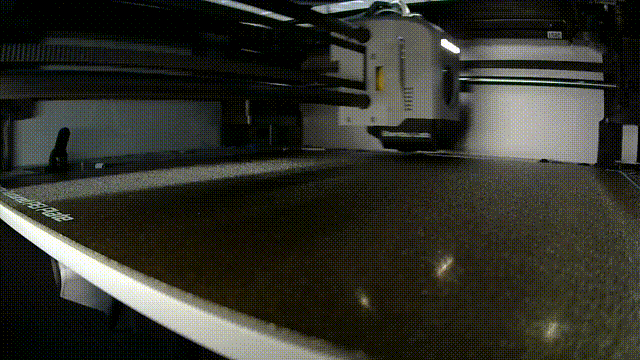
The acceleration capabilities are the real game-changer here. The printer doesn’t just move quickly in straight lines; it changes direction with minimal ringing, which means you can actually use those high speeds for real-world prints, not just spec-sheet bragging rights.
FlashForge 5M Pro: While not as blistering as the Bambu, the FlashForge holds its own with respectable speed. Most prints finished in about half the time compared to the Ultimaker, with comparable quality. I was particularly impressed with how it maintained consistency at higher speeds – a problem that plagues many printers in this price range.
Ultimaker S3: Let’s be honest – speed is not why you buy an Ultimaker. It’s deliberately conservative with its speed settings, prioritizing consistency and quality over quick prints. That said, the latest firmware updates have improved speed somewhat, and you can push it harder with custom profiles. Just don’t expect it to keep pace with the Bambu or even the FlashForge.
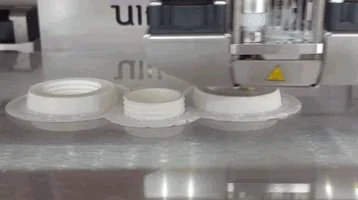
Real-World User Experiences
I’ve been running all three printers almost daily for three months, but I also reached out to my 3D printing community to gather broader perspectives. Here are some candid user experiences:
Mike, Product Designer (owned for 7 months): “I switched from an Ender 3 to the FlashForge and it’s been night and day. The enclosed chamber made ABS printing actually reliable instead of a frustrating exercise in warping. The best part is that it just works – I’ve had maybe two failed prints in seven months of heavy use. The built-in camera is surprisingly useful for checking prints remotely. If I had to nitpick, the slicer software could use some refinement, but it plays nice with PrusaSlicer which is what I use anyway.”
Sarah, Etsy Shop Owner (owned for 5 months): “This printer saved my small business. I make custom gaming accessories, and the reliability means I can start prints before bed without waking up to spaghetti. The enclosed design keeps the noise down enough that I can have it running in my apartment without driving my roommates crazy. I wish it had faster travel speeds for larger orders, but the quality has been consistent enough that I rarely need to reprint anything.”
James, Mechanical Engineer (owned for 10 months): “The speed of this thing still blows me away. I was skeptical about the claims, but it legitimately prints 5x faster than my old Prusa with equal or better quality. The AMS system has some quirks and can jam occasionally with certain filaments, but when it works, multi-material printing is seamless. The mobile app actually works well, unlike most 3D printer apps that feel like afterthoughts. My only real complaint is that replacement parts are relatively expensive.”
Taylor, Architecture Student (owned for 3 months): “Coming from a university lab with Ultimakers, I was worried about quality compromise. But honestly? The Bambu has been incredible for my architectural models. The speed means I can iterate designs much faster before deadlines. The one downside is that it’s slightly louder than I expected, especially during rapid direction changes. I’ve also had a few hiccups with the cloud service being down, but local printing always works fine.”
Dr. Roberts, Research Scientist (owned for 18 months): “In our lab, reliability trumps everything. The Ultimaker S3 has printed nearly continuously for a year and a half with minimal maintenance beyond normal cleaning and nozzle changes. The dual extrusion is flawless for our complex models with soluble supports. Yes, it’s expensive, but when you factor in the virtually non-existent downtime and perfect prints, it’s actually economical for professional use. The material compatibility is essential for our specialized applications – we can print with carbon fiber composites and flexible materials without modifications.”
Linda, Small Business Owner (owned for 14 months): “After going through two cheaper printers that constantly needed tweaking, I bit the bullet and invested in the Ultimaker. It was painful upfront, but I’ve never regretted it. The print quality sells my products, and clients are willing to pay premium prices when they see the finish quality. The networking features are robust – I can queue projects remotely and manage multiple prints without babysitting the machine. That said, I do think the build volume could be larger for the price point.”
Software Ecosystem & User Experience
A great printer with terrible software is like a sports car with square wheels. Here’s how these three stack up:
Ultimaker S3: Ultimaker Cura is the gold standard for a reason. The integration with the printer is seamless, with accurate print time estimates and material profiles that just work without tweaking. The printer’s interface is equally polished – clear, responsive, and logical. Cloud printing and fleet management features are particularly valuable for businesses or educational settings.
Bambu Lab X1C: Bambu Studio (based on Prusa Slicer/SuperSlicer) is surprisingly refined for a newer company. The killer feature is the print preview simulation that accurately shows how the print will look, layer by layer, including any potential issues. The hardware-software integration allows for features like automatic flow calibration that genuinely improves print quality. The mobile app is also one of the better ones I’ve used, with useful notifications and remote control that actually works.
FlashForge 5M Pro: The bundled FlashPrint software is… functional. It gets the job done with basic features, but lacks the refinement and advanced options of the others. Fortunately, the printer works well with third-party slicers like PrusaSlicer or Simplify3D with a little setup. The printer’s touchscreen interface is intuitive enough but occasionally lags when browsing larger files.
Reliability & Maintenance
After hundreds of print hours, here’s what you need to know about keeping these machines running:
Ultimaker S3: This is where the premium price really shows its value. The Ultimaker required virtually no maintenance beyond routine nozzle cleanings during my testing period. The print cores (hot end units) are user-replaceable in seconds, and the automatic bed leveling rarely needs adjustment. The material flow sensors have prevented several potential failed prints by detecting issues early.
FlashForge 5M Pro: Surprisingly robust for its price point. The direct drive extruder is less prone to issues than Bowden setups, and the enclosed chamber keeps dust contamination to a minimum. I did need to tighten some belts after about two months of use, and the build plate required occasional readjustment. The nozzle is standard and easily replaceable, which is a plus for long-term ownership.
Bambu Lab X1C: Generally reliable but with some caveats. The AMS system, while innovative, introduced most of the reliability issues I encountered. Filament jams in the feeding system happened a few times, especially with softer materials like TPU. That said, the main printer mechanism was rock-solid, and the automatic calibration system worked consistently. The high-speed operation doesn’t seem to accelerate wear and tear as I initially feared.
Value Proposition & Who Should Buy What
Let’s talk about getting the most bang for your buck:
FlashForge 5M Pro ($799): The clear value champion. You get 80-90% of the print quality of machines costing 4-5 times more. This is the printer I recommend to most friends getting into the hobby or looking to upgrade from entry-level machines. It’s perfect for:
- Hobbyists who print weekly rather than daily
- Those upgrading from budget printers
- Makers who need enclosed printing for ABS but have budget constraints
- Beginners who want room to grow without overwhelming complexity
Bambu Lab X1C ($1,199): The innovation leader with a reasonable price for what you get. The speed alone justifies the premium over the FlashForge for many users. Best suited for:
- Impatient makers who hate waiting for prints
- Small businesses needing quick turnaround on parts or products
- Tinkerers who appreciate cutting-edge features
- Multi-material printing enthusiasts who don’t want to break the bank
Ultimaker S3 ($3,850): The premium option that makes sense for professional applications where downtime costs more than the printer. Ideal for:
- Professional design studios and engineering firms
- Educational institutions needing bulletproof reliability
- Manufacturing environments requiring certified material compatibility
- Users who need genuine dual-material printing with soluble supports
My Personal Take After Three Months
If I had to choose just one of these printers to keep, which would it be?
It depends entirely on use case. For my personal hobby printing and occasional professional prototyping, the Bambu Lab X1C hits the sweet spot of speed, quality, and innovative features. The time savings alone has changed how I approach iterative design.
However, if I were buying for a business that depends on 3D printing for client deliverables, I’d save up for the Ultimaker S3. The reliability and consistent quality would quickly pay for the price difference in reduced headaches and higher client satisfaction.
The FlashForge 5M Pro remains my top recommendation for friends looking to get serious about 3D printing without major investment. It’s the printer I wish existed when I was getting started.
The Bottom Line
There’s no single “best” 3D printer among these three – just the best one for your specific needs and budget:
- FlashForge 5M Pro: The value king that punches well above its weight class
>>>Shop For Your FlashForge 5M Pro Now on MatterHackers<<<
- Bambu Lab X1C: The innovative speedster redefining what’s possible in consumer 3D printing
>>>Shop For Your Bambu Lab X1C Now on MatterHackers<<<
- Ultimaker S3: The proven professional workhorse that justifies its premium price through reliability
>>>Shop For Your Ultimaker S3 Now on MatterHackers<<<
Whatever you choose, all three represent how far desktop 3D printing has come. When I remember struggling with my first printer just a decade ago, constantly tweaking and upgrading just to get basic functionality, I’m amazed at how accessible this technology has become.
FAQs: Your Burning Questions Answered
Q: Can any of these printers handle flexible filaments like TPU? A: Yes, all three can print flexible filaments, but with varying degrees of success. The direct drive systems on the Bambu X1C and FlashForge 5M Pro handle flexibles better than the Ultimaker’s Bowden setup, though Ultimaker’s specialized print cores help mitigate this disadvantage.
Q: What about noise levels? Can I use these in an apartment? A: The FlashForge 5M Pro is the quietest due to its fully enclosed design, measuring around 45-50dB during operation. The Ultimaker S3 follows at approximately 50-55dB. The Bambu Labs X1C is the loudest, especially in high-speed mode, ranging from 55-65dB depending on print settings. For apartment use, the FlashForge is your best bet, though all are acceptable if not placed in sleeping areas.
Q: How difficult is the initial setup? A: The Bambu Labs X1C has the most streamlined setup process, taking about 30 minutes from unboxing to first print. The Ultimaker S3 takes approximately 45 minutes but includes more comprehensive calibration. The FlashForge 5M Pro requires about an hour, with more manual leveling and configuration, though the process is well-documented.
Q: Which printer is best for a classroom environment? A: The Ultimaker S3 shines in educational settings due to its reliability, safety features, and excellent support resources for educators. The enclosed FlashForge 5M Pro is a budget-friendly alternative that still offers good safety features for student use.
Q: Can these printers be left unattended during long prints? A: While no 3D printer should be left completely unattended for fire safety reasons, these three are among the safer options. All feature thermal runaway protection and the Ultimaker and Bambu models include remote monitoring with alerts for potential issues. The enclosed designs of the FlashForge and Bambu add an extra layer of safety.
About the author: James has been designing, building, and reviewing 3D printers for over 10 years. When not covered in failed print plastic, he teaches engineering and runs a small product design consultancy.
Disclosure: This article contains affiliate links. If you purchase a printer through these links, I receive a small commission at no extra cost to you. These commissions help support the extensive testing that goes into these reviews.
